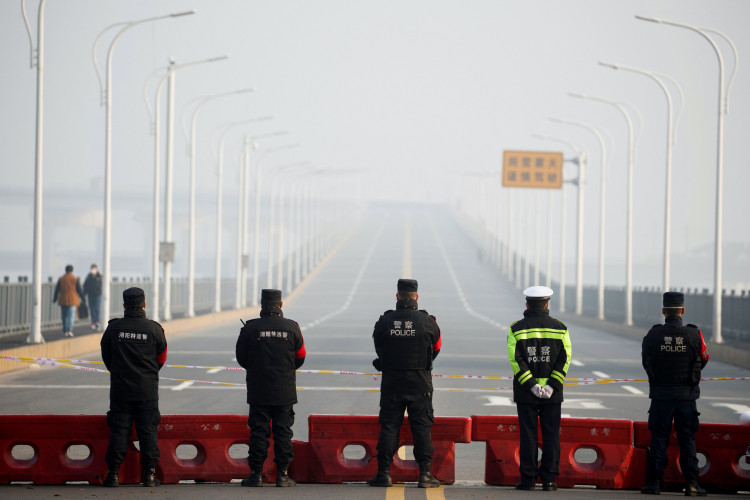China revealed 103 new COVID-19 cases this week with most recorded in the country's northeast region that includes the capital Beijing as the country gears up for a major holiday period in February.
The National Health Commission (NHC) on Wednesday said the total compares to 118 cases reported Monday. Of Tuesday's cases, 46 were reported in northeastern Jilin province. Hebei province, which surrounds Beijing, reported only 19 new cases.
The latest outbreak is the most serious since July 2021. Nationwide daily new cases averaged 122 over the past seven days, which is up 718% compared to the 15 cases in the previous week.
China marks public holidays from Feb. 11 to 17 for the Lunar New Year, or spring festival, normally a time when there are millions of travelers headed for family gatherings. The government however has urged staying-in-place this year to avoid an acceleration in cases, even as many people have already booked transportation via rail, buses and flights.
"We estimate that around 1.7 billion passenger trips will be made during the 2021 Lunar New Year travel season, averaging around 40 million per day," said Wang Xiuchun, a senior official of the Ministry of Transport.
China's reported COVID-19 cases only reflect only symptomatic diagnosis and don't count asymptomatic cases as confirmed, health experts say.
"From our perspective, the shape of the curve is more important than the absolute numbers (of which the accuracy is up for debate)." independent market watcher SilkRoad Research said in a report this week. "The latest increase is the sharpest, most sustained and widespread surge since March of last year."
At least two of the 103 new confirmed COVID-19 cases in China on Wednesday are the more infectious COVID-19 mutation called B.1.1.7 first discovered in the United Kingdom in September 2020. NHC said the two B.1.1.7 cases were found in Beijing's Daxing District. The two persons with the variant are among the six Daxing residents confirmed as infected by COVID-19.
Analysis of the two Daxing cases shows them to be highly like the more transmissible B.1.1.7 strain, said Dr. Pang Xinghuo, deputy director of Beijing's Center for Disease Control and Prevention.
Pang explained the two Daxing cases have no genetic association with previous local and imported cases in Beijing. The virus detected in Daxing has also no similarity to recent local cases in other Chinese regions.
As a precaution, Beijing on Wednesday shut down the Tiangong Yuan metro station located near the site of the Daxing infections.
Pang said the source of infection was initially determined to be from overseas.
The first case of B.1.1.7 was confirmed in December when a 23-year-old Chinese woman returning from the UK tested positive for it in Shanghai. Genome sequencing confirmed the virus infecting her was not the same as that circulating in Shanghai and Wuhan but was like B.1.1.7.
China also blames imported frozen food for causing an outbreak in Hebei province. Dr. Ma Xiaowei, NHC 1st Minister in charge, said the COVID-19 outbreaks in Hebei and other provinces in the northeast came from contaminated frozen food imports and foreigners entering the country.
"Since December 2020, epidemic clusters have occurred in Beijing, Sichuan, Liaoning, Hebei and Heilongjiang," said Ma.
"They mainly have the following characteristics. Firstly, they are all imported from abroad, caused by travelers from overseas, or contaminated cold-chain imported items."






